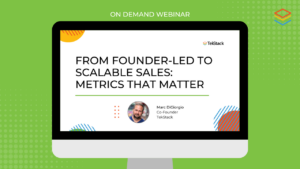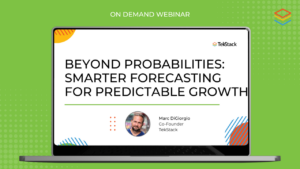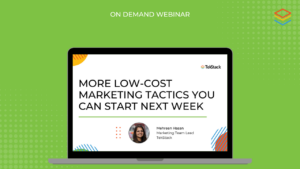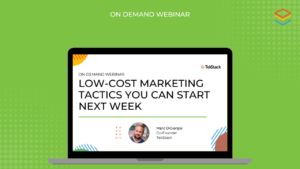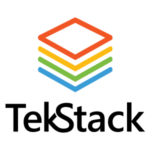
Now more than ever, B2B Software companies need to focus on funnel conversion and win rate rather than filling the very top of the funnel with “Leads”. That might sound counter intuitive but the fact is that leads cost a lot of money. Their marginal cost only goes up and up. Most additive leads are captured through expensive paid marketing programs. When they don’t convert into opportunities, it just makes the opportunities that do convert, on average, that much more expensive.
Companies need to switch their focus to sales velocity and sales efficiency. The metric they need to look at is their Magic Number. The magic number should ideally be hovering around 2:1. That is, generating $2 of bookings for every dollar spent in sales and marketing. If its any less, you’ll eventually run out of cash. The smaller your ARR, the quicker that day will come. If its more, you’re doing great and investing in additional sales and marketing is probably a good bet.
Here are five areas most software companies area likely struggling with. If you fix, you’ll fix your Sales Velocity and Sales Efficiency the quickest without spending a dollar more in the business:
Sales Discovery and the First Impression Bias
On the first interaction the most important elements are call planning, discovery questions, and call follow-up. Our friends at Neural Impact and of course Cerebral Selling will prophesize this continuously. Most sellers are inconsistent and need coaching on all three of these elements. This is the make-or-break moment with a buyer. Buyers buy emotionally and most sellers ignore the most important cognitive bias of First Impressions. Coaching sellers is easy if you give them the tools to apply this framework on every first interaction. Give them standard discovery questions, hone those each month, share wins, do role plays. Provide them a standard call planning checklist. A set of questions they need to get answers to before the call. Make sure their follow-up is on point. Give them an email template to follow. Get them to use video in their follow-up.
Account-Centric (Targeted Account) Strategies
The current Lead to Opportunity process is completely broken. Its creating higher spending through lower conversion marketing programs. It creates buyer friction at the earliest stage of the funnel (think gated web content that marketers use to boost “MQLs”). It ignores the fact that most B2B buyer journeys are made in groups, not individually. It creates piles of bad data.
We’ve talked about the B2B Demand Waterfall before. The team that gave us alphabet soup – MQLs and SQLs– back in 2006 transformed their model in 2017 putting on more humanized stages for potential buyers. They also turned the approach upside down to focus on an account centric approach. Many companies recognize the need to move to this strategy but lack a way to get there. Usually because of tool limitations, poor data, how departments are measured, and how people are compensated. With an account centric approach, you will target higher fit customer profiles, align to the right buyer personas, and reduce marketing spend. An account centric approach will also align to ABM strategies that include targeted ad programs and email campaigns.
The Marketing to Sales Handoff
Marketing is always eager to hand off leads to sales because of the pressure the business puts on the department to delivery results. But, if the buyer action is lower intent – think guide download, or webinar registration – it will just lead to frustration for the buyer and your seller. Sellers become sceptical of all marketing leads to the point where when a good one comes in, the response lacks urgency (which also puts off the buyer). There are solutions to this problem. Most of the solutions are process and tool related, but other parts are target and compensation based.
Outbound Prospecting
Healthy funnels have a good mix of channels or sources. A good goal is to have at least 50% of your opportunity funnel generated by sellers. But how do you do this when sellers are busy closing deals? Well first, are they? If a seller isn’t at 100% of their quota, they have time to prospect. It’s the most important part of their job. They probably just don’t want to. Prospecting is hard and any seller that started their career in the last 10 years probably hasn’t had to come through the hard knocks school of sales.
What makes a seller’s job much easier is using an outbound sequencing machine. These tools have come of age in the last five years. They’ve probably been too successful. You are likely using one to some, but limited, effect. Most sellers are using these tools as automated email machines creating noise and buyer fatigue. However, if used correctly it will improve a sellers productivity by a factor of 4-5X. Especially if used in conjunction with an account centric approach. If you have a well defined ICP and Buyer Persona, and have a good hook, these tools are magical.
Forecasting
How does bad forecasting hinder sales velocity? Two main drivers of win rate and sales cycle length. A good forecasting process is really backed by good funnel reviews. One yields good results for the other.
The most important elements of forecast accuracy are:
- How quickly did the deal move from the first stage to the second stage? We all know that deals that stay in Stage One for 180 days are never going to close. Those that move quickly through the first stage, close quickly. Now this assumes sellers are using the sales process correctly.
- How engaged is the buyer? When was the last time they talked to your seller?
- Who wants you and who doesn’t? Identifying all the stakeholders on a deal, identifying if they are Y/N votes, and if your seller has a sponsor.
If a sales manager can easily identify this information in addition to the:
- Close date
- Sales stage (and how long its been in that stage)
- Deal size (ARR vs Total Value)
- Last and next action information
All without asking the rep; then they identify if the deal fits one of these important categories:
- Committed (have verbal, in contracts),
- Best Case (it’s looking like it has momentum to close) or
- Pipeline (fodder for now, but we’ll look how its going)
If a seller says they don’t have time to update their opportunities in CRM, they need to look hard in the mirror and ask themselves if they are in the right job. Seriously. Not only is this information important for the company that pays them, its important for their own success. If they can’t map out an account, they are working on sheer luck or charisma.
Your base sales forecast simply becomes all deals in the period that are at already closed, or committed. Your optimistic forecast becomes all closed won, committed, and best-case deals in the period. Easy.
If the number isn’t what it should be, it makes good conversation with the team. The burden should not be borne on the sales leader alone. Sales is a team sport. But you need to start with good data that you can action.
How does TekStack help?
A CRM is supposed to provide the tools for both governance and seller productivity and should not be a hindrance. TekStack has build all these processes into its tool. We provide SOPs for each function so you don’t even need to think about what the process should be and how to move into process change. No need to customize anything, no need to build reports. Here are some examples of what we’ve done:
- Provide a framework to track accounts as Engaged, Prioritized, Qualified (there are more stages before and after these stages). The stages move automatically and allow you to track reasons they move forward and back. We also count the number of days at each stage and the conversion. This provides greater visibility on attrition and attrition reasons. Especially when compared to first and last touch.
- We provide first touch attribution (how did this account or contact get into the CRM in the first place), last touch attribution (what was the thing that pushed the account over the edge to become an opportunity), and middle touch attribution (what are all the things that this account and its buyers did between first and last touch). We can track each attribution source to a campaign which provides great insight for marketing. Sometimes the wins are the middle parts of the journey, the awareness and education that marketing should be tasked with.
- With embedded sales coaching frameworks, we make it easier for sellers to take notes and document their journey with a buyer. We incorporate Teams, SharePoint, and OneNote to great effect.
- Provide fully integrated marketing automation and outbound prospecting tools that link to one database, not three. This provides a coordinated approach on the buyer, makes it easier for sellers to identify when the buyer was last reached. Our outbound sequence capability has a higher degree of inbox deliverability because of its Microsoft Graph API integration. Its also simple to use so any seller can spin up their own sequence campaign.
- Capture key metrics for sales managers to fully evaluate the quality of deals so they can forecast accurately.
If you are struggling with any of these topics, we’d love to chat. We can offer a full diagnostic of your current sales operations and identify opportunities for improvement.



